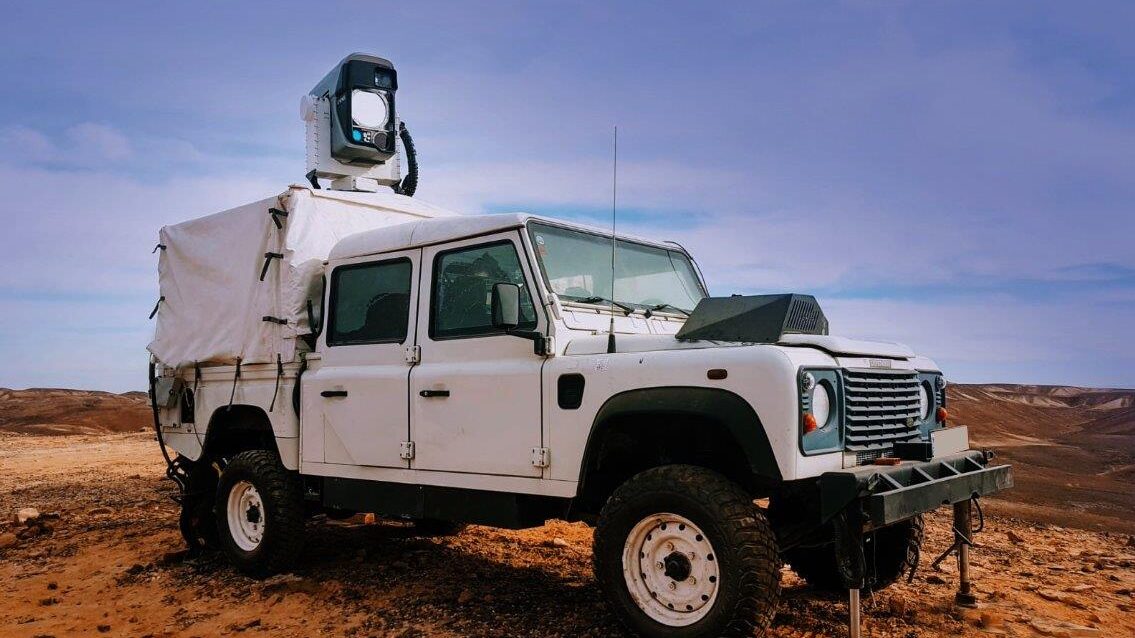
Rafael, which has already invested in laser defense systems, will be a key player in Iron Beam. (Rafael)
TEL AVIV: Israel has made a small but significant step towards a laser-based system that is capable of intercepting missiles, with the announcement that the country’s “Iron Beam” system officially has a budget.
The program, which has existed in some form of R&D for more than a decade, has faced headwinds as a result of a long-running conflict between proponents and opponents of laser-based defense systems. But the technology appears to have matured to the point the government is now willing to put real money behind it.
Following a series of discussions over recent months, Defense Minister Benny Gantz approved the allocation of hundreds of millions of shekels for the development and production of the Iron Beam system. Maj. Gen. Amir Eshel, the director general of the ministry of defense, is expected to sign off on further development of the system this week.
The development plan for “Iron Beam” will be led by Israel’s R&D team in the Ministry of Defense, together with Rafael and Elbit Systems. On March 17 , Gantz toured the Rafael compound together with the head of Research and Development at the DDR&D, Brig. Gen. Yaniv Rotem, Rafael CEO Yoav Har-Even, and General Manager at Elbit Systems ISTAR & EW, Oren Sabag, where were presented with the system details. Subsequently, Gantz approved the plan’s progression according to the work plan and the agreement with Rafael.
Defense sources here say that the initial effort will be to develop an electric 100-150 kW solid-state laser that will be capable of intercepting rockets and missiles. The idea is to use two laser guns to create the needed power.
A source in the defense industry said that in order to have a system that will be capable of intercepting more than short-range rockets and missiles, Israel will need a laser generator that will be capable of producing a 1-megawatt beam.
The initial goal of this first phase is for Iron Beam to be a backup for the Iron Dome system; eventually the hope is a stronger solid-state laser emerges that can take on bigger threats. Anything that can help supplement Iron Dome will be welcome, as the system is struggling with maintaining enough interceptors following the 2021 Guardian on the Walls operation.
The technology may have international interest as well. In 2021, Rafael announced a team-up with American defense giant Lockheed Martin to “explore opportunities and technology implementations” based around the work being done on Iron Beam. The US and Israel have collaborated closely on development of other air defense systems, most prominently the Iron Dome and David’s Sling systems, for which the US has supplied significant R&D funding.
The US itself has been long intrigued by the potential of a laser-based air defense system. The benefits are clear; instead of expensive interceptors, whose stocks need to be maintained, needed to take out cheaper incoming threats, a laser-based weapon would have unlimited ammunition. However, questions about power, cooling and range have plagued the development of such systems for years.
In the past, Israel and the US cooperated for the development of the Nautilus, a Tactical High-Energy Laser, or THEL, designed for countering rockets. In 1996, the United States and Israel agreed to cooperate on the development and production of the Nautilus. In 2000 the demonstrator managed to shoot down 28 Katyusha artillery rockets and five artillery shells. However, the prototype weapon was very big and heavy, and could not get smaller mainly because of the specifications of the Laser generator.
The program was discontinued in 2005, and a coalition of officials at the MoD and in industry concluded that a laser system would never be able to meet Israel’s regular air defense needs, setting up the major delays of investment and development that caused Iron Beam to linger as a research project.
In other Lockheed in Israel news, the American firm has announced increased cooperation with Israel Aerospace Industries (IAI) on air defense systems.
The two companies have agreed to partner to jointly promote a Ground Based Air Defense (GBAD) system, centered around the Lockheed’s battlespace situational awareness SkyKeeper system, in use in the United Kingdom since 2014, and the Barak MX air defense system, which was recently selected by Morocco for its air defense needs.
This new cooperation is a direct result of a Memorandum of Understanding (MoU) signed between the companies in July 2021, which both sides have touted as coming after a deep review of relevant business opportunities.
“We’re looking forward to further developing our partnership with IAI and working together to deliver a state-of-the-art solution designed to address the critical gap in short and medium-range ground based air defense,” said Scott Arnold, Lockheed’s vice president for integrated air and missile defense, said in a press release.
Added Boaz Levy, president and CEO of IAI, “These are the fruits of the cooperation agreement we recently signed with Lockheed Martin, the leading defense contractor in the U.S., and IAI’s steadfast partner over many years and in various fields. I am pleased that Lockheed Martin selected us, and I am certain this reflects the high mutual esteem existing in both the technological and business fields between the two companies. Together we will continue to lead substantial projects for our customers around the world.”
Sullivan: Defense industry ‘still underestimating’ global need for munitions
National Security Advisor Jake Sullivan said that there are “no plans” for another Ukraine supplemental at this point.


























